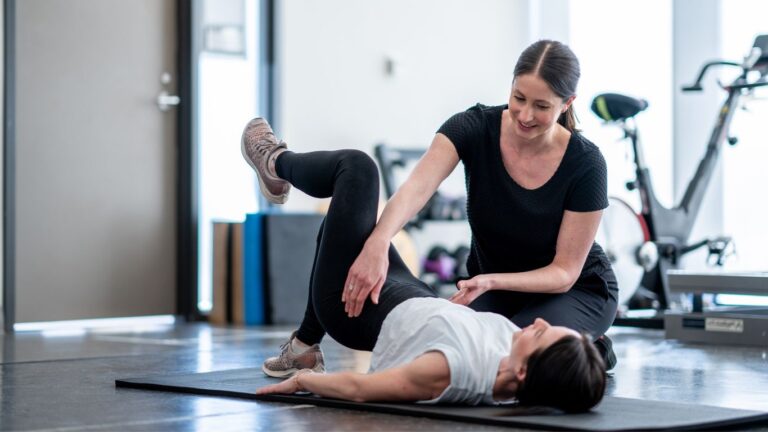Is Exercise Therapy Effective in Solving Your Knee Pain
Let’s Find Out:
Patellofemoral pain syndrome (PFPS) is the scientific term for pain at the front of your knee. Generally, the pain is difficult to pinpoint, and can be widespread across the entire knee. Often, your knee aches, with certain movements causing intermittent sharp pains.
As the pandemic hit, there is a huge influx of individuals coming in with PFPS type pain. Many clients have lost access to a gym, and their normal exercise routines have been disrupted. PFPS is usually most present in those who have started to ramp up their exercise intensity and frequency, but have lost significant strength/fitness.
Dissecting research and applying it to your practice is a crucial part of being a physiotherapist. As the evidence is always changing, it is important to keep up, to ensure that you’re providing your clients with the best care currently available.
I often rely on Cochrane reviews, which collects all of the available high quality research on a given topic, and attempts to summarize the findings in a simple, concise manner.
Today, I will be providing a quick summary of the evidence supporting exercise therapy for treatment of PFPS that is pulled from the citation below.

This Cochrane review found 31 articles related to the topic, with a combined 1690 participants. It used the following measures to determine the effectiveness of exercise.
- Pain during activity (short term and long term)
- Usual pain (short term and long term)
- Functional ability (short term and long term)
Short term is defined as <3 months, whilst long term is >3 months.
In randomized controlled trials, there is always a ‘test group’ and a ‘control group’. The test group is the one that receives the intervention, which in this case is an exercise program, and the control group receives ‘usual care’. Usual care in physiotherapy is an attempt to mimic what you’d expect at a clinic (heat, ice, stretches, etc.).
When comparing exercises to the control, it was found that exercise in general improved pain, both in the short and long term, as well as function long term.
The review also assessed if there was a difference between exercise programs focused on just the knee, versus those that focused on both the knee and the hip. It was found that there was no significant difference between the two groups.
Summary:
Overall – generalised exercise has shown to improve not only your pain, but also your functional ability in the long term. Therefore, it is important to find what works for you. Whether that is starting a strength program, swimming, yoga, or pilates, exercise is the key to healthy knees.
It is important to note that as research in this area continues to improve, that exercise prescription may change. Future studies in comparing specific exercise programs to more general ones would be beneficial in guiding knee pain rehabilitation.
If you’d like to read the full article, I have included the link to the PDF below.







